5 – The emergence of a Scottish Nation 840 to 1100 AD
| < 4 – Anglo-Saxons and Vikings 400 AD to 900 AD | Δ Index | 6 – Norman Influence 1066 to 1250 > |
The Anglo-Saxon and Viking invaders gradually forced the individual kingdoms and clans to unite, leading to the emergence of a more or less unified Scottish nation. Kenneth MacAlpin, is generally recognised as the first King of Scotland, crowned in 843 AD. Thereafter the right to be king was often settled by marriage, mayhem or murder!
Early Scottish Castles
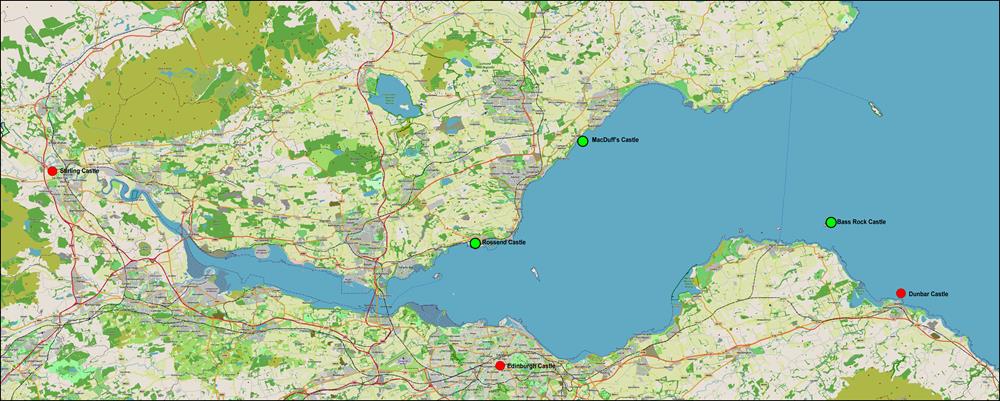
By some time around 1000 AD Edinburgh Castle and Stirling Castle were both owned by the king, but the local chieftains or nobles still controlled their traditional fiefdoms, and stared to build new fortified homes to underline their claims.
On the north side of the Forth, the MacDuffs who were Mormaers, or Earls of Fife built MacDuffs Castle at East Wemyss at the time of Macbeth (1040 to 1057).

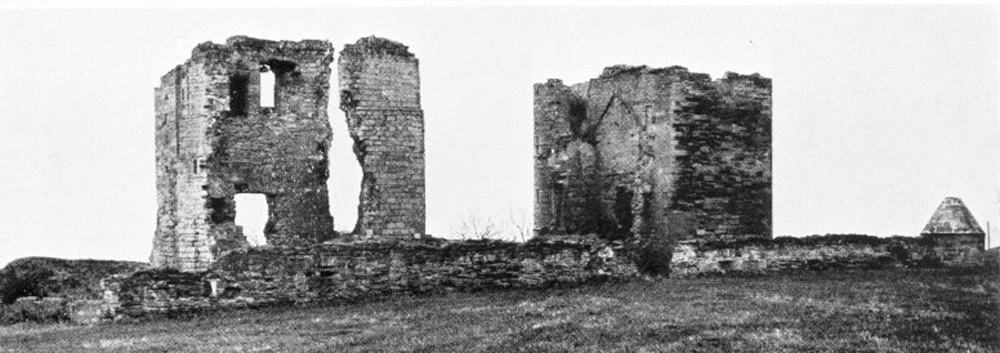 MacDuffs Castle at East Wemyss
MacDuffs Castle at East Wemyss
Cospatrick, the Earl of Northumbria (the kingdom of Northumbria had stretched to the Forth in Anglo Saxon times) was granted Dunbar Castle in 1072, by Malcolm III (Malcolm Canmore).
In 1070, Malcolm married Margaret, the great-niece of Edward the Confessor. She added St Margaret’s Chapel to Edinburgh Castle, and founded the passage at Queensferry to allow her to reach a new Benedictine abbey that she had established at Dunfermline.
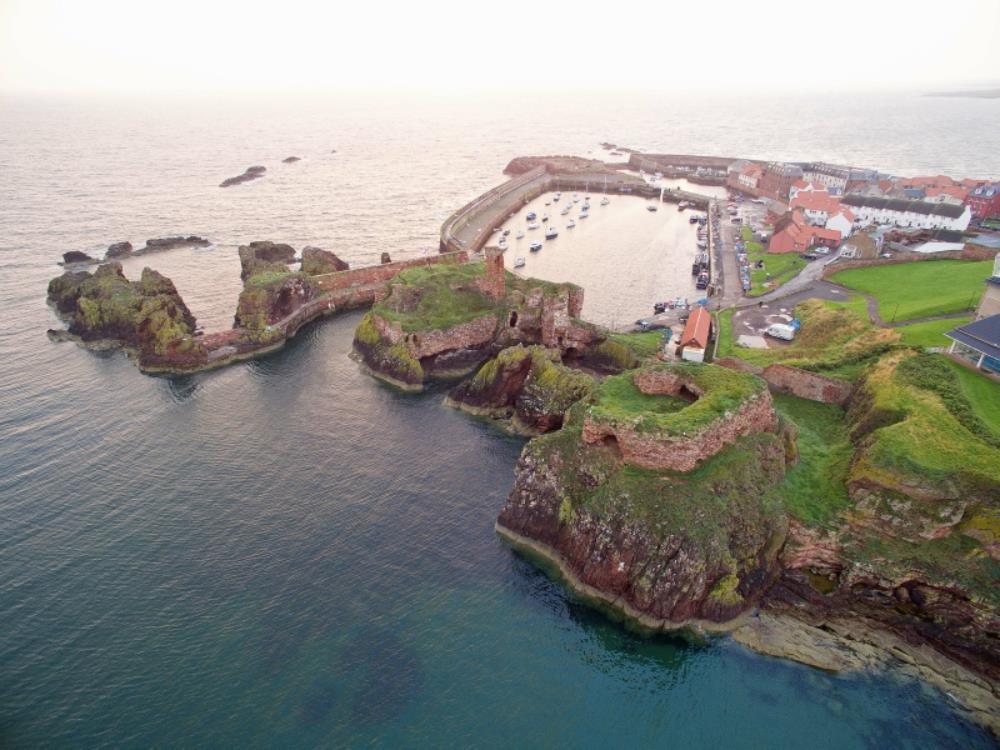 Dunbar Castle
Dunbar Castle
Just along the coast from Dunbar, Malcolm granted the Bass Rock to the Lauder family, where they built Bass Rock Castle some time in the 1070s.
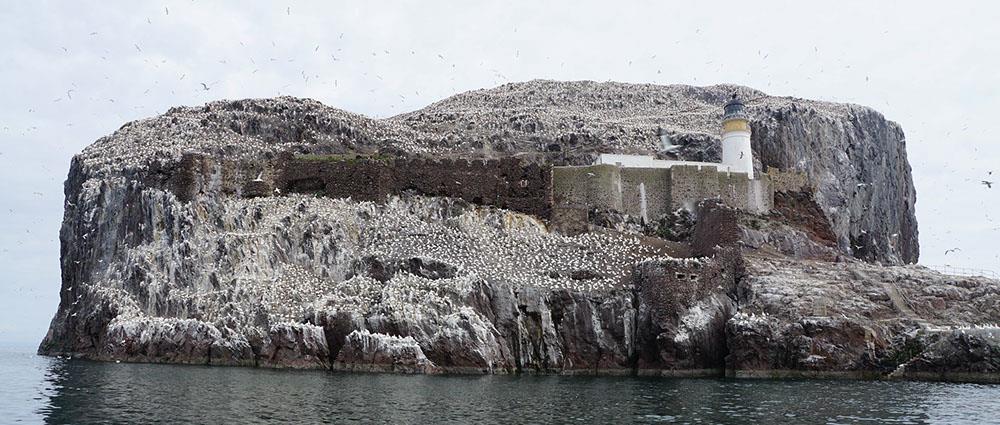 Bass Rock Castle
Bass Rock Castle
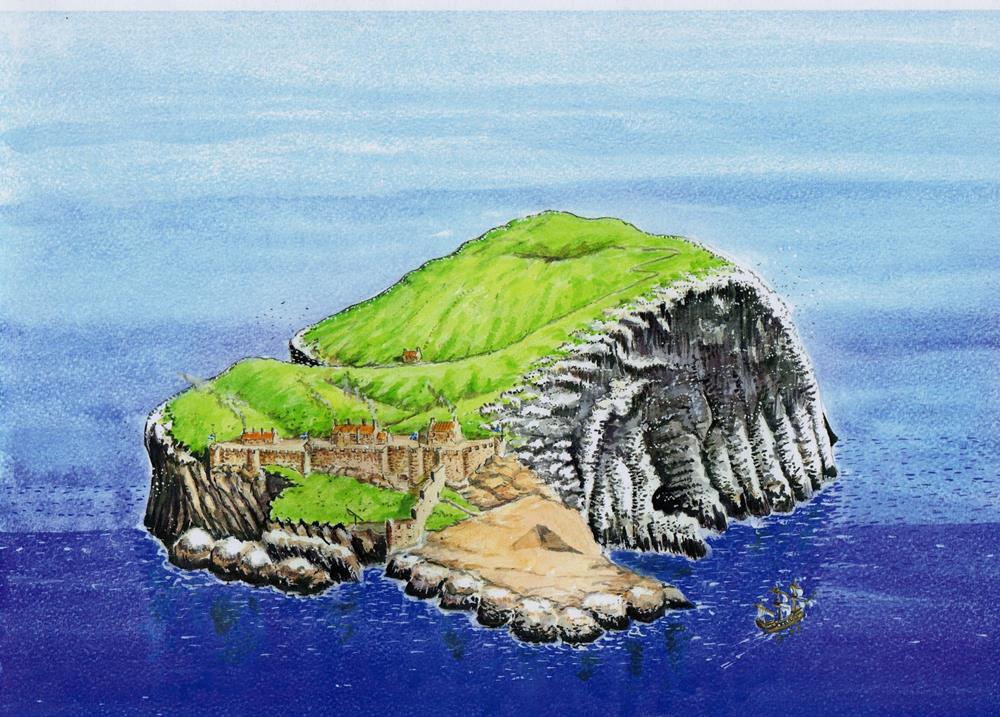 A digital reconstruction of Bass Rock Castle
A digital reconstruction of Bass Rock Castle
About fifty years and five kings later, in the reign of Alexander I, the Duries of Durie build the “Tower of Kingorne Wester” in 1119. They later built Rossend Castle on the same site in what is now Burntisland.
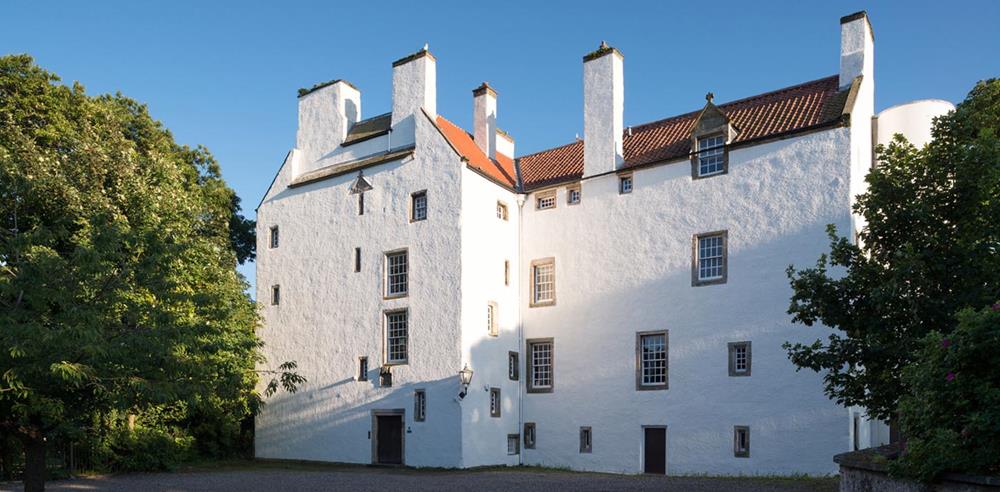 Rossend Castle
Rossend Castle
| < 4 – Anglo-Saxons and Vikings 400 AD to 900 AD | Δ Index | 6 – Norman Influence 1066 to 1250 > |
top of page
